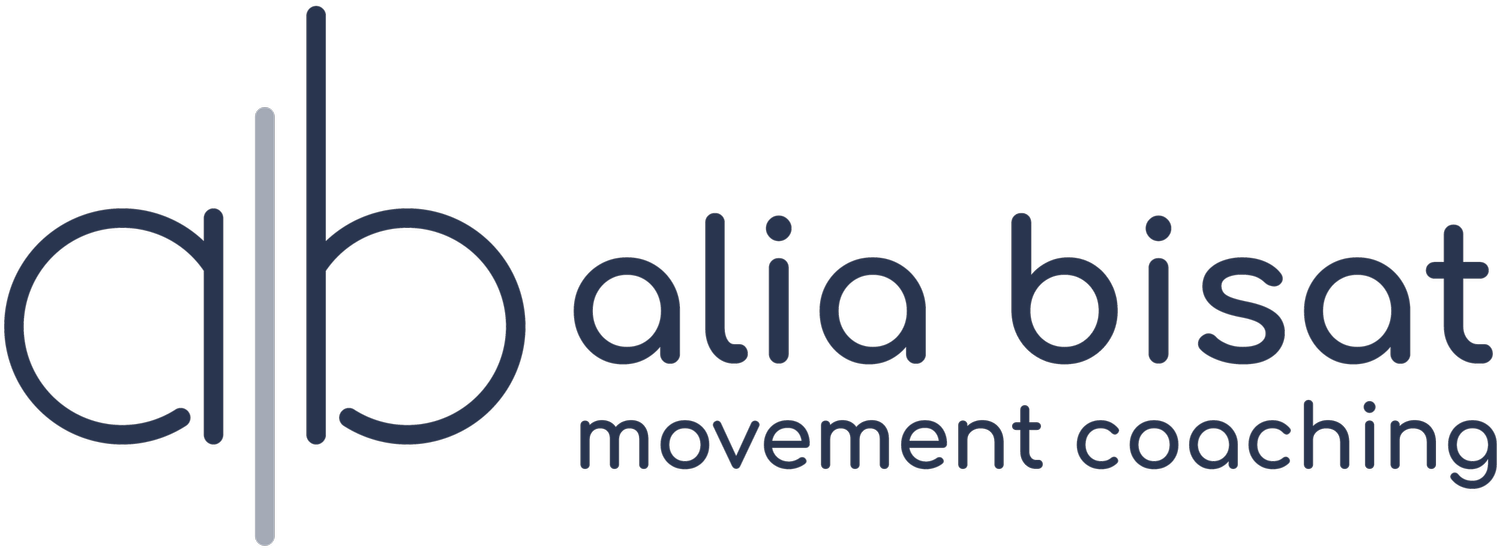Biases, Movement Options, and Running Form
I recently finished Todd Hargrove’s second book, Playing with Movement, which I enjoyed even more than his first. A repeating theme in his work, a theme I’m familiar with and that has guided my work with clients and myself for a while now, is that there is much less in the musculoskeletal body to be “fixed” than we might imagine. We can re-frame the mindset from “I should fix X,Y,Z about my posture/gait/shoulder function/running form/fill-in-the-blank” to “How can I create more movement options so that my body can reorganize its movement patterns in the most efficient way?”
The first thing to note is that the first mindset is a directive and the second mindset is a question. This is essential as the question implies that there are many answers all applicable to different bodies under different circumstances. Overwhelming as it may seem, having so many possible solutions to a problem actually creates more freedom for us! Coincidentally, this is exactly how the moving body works as well and why this mindset shift can be so powerful. The more options the body has for movement, the more various solutions it can come up with to accomplish a given movement problem.
Knowing this, and practicing this, doesn’t eliminate my biases entirely. We all have biases based on things we’ve read, heard, and experienced all consciously or subconsciously—and biases are so hard to change. For example, I have a bias toward forefoot/midfoot running. When we run, we either heel strike—meaning the first part of the foot to hit the ground is the heel—or we midfoot/forefoot strike—which means the ball of foot hits the ground first. (There is a difference between midfoot and forefoot striking, but it’s not relevant at the moment so as I refer to forefoot striking going forward, I’m referring to anything that’s not a heel strike). You’ve likely heard of barefoot running and minimalist footwear. It has been shown that running barefoot or running with footwear with minimal support/cushioning encourages a forefoot strike. This striking pattern mimics that of our tribal ancestors who ran—and existing tribes who still do run—barefoot or with minimal footwear. It’s a big debate in the running and physical therapy world with no concrete answers. Based on some books and blogs I’ve read and my own personal running experience, I am an advocate of forefoot running form.
Just a few months ago, I watched a webinar presented by a physical therapist who advocated forefoot running and cited plenty of research for her advocacy. Her work well supported my existing opinion so I left the webinar satisfied. Then I read in Todd’s book this past weekend, “Heel striking is not associated with increased injury rate, and is the most energy efficient way for most people to run . . . 75% of elite half marathon runners are heel-strikers . . . trying to correct running form is unlikely to prevent injury, and will often cause runners to be slower and less efficient.” (p.185). All of these claims are also cited with research, all of which I looked up. This did not match up with my bias and made me pause and ask questions and reflect.
Needless to say, I was completely overwhelmed when thinking I could determine the answer by skimming the research. In some cases, a study is itself inconclusive. In other cases, the studies are conclusive with one answer while conflicting studies seem to come to a direct opposite conclusion—which inherently makes all of it inconclusive!
Ok, why am I sharing all of this with you? Because my bias was clearly challenged, and as you can see from reading the above, things got seemingly complicated fairly quickly when trying to dissect the research for an answer. There are very few clear answers to our questions, very few one stop solutions to our physical problems. Many professionals and clinicians may stick to their biases because the ambiguity of conflicting research is not what a patient/client wants to hear. BUT, if we go back to the origin of this post, the central theme that can guide us and how we learn to move our bodies, there is an answer and it is this: the more options we have, the better off we’ll be. So, what does that mean for running? It means that forefoot running isn’t a clear “should” for running form. However, adding variables to our running routine can enhance our resiliency and promote healthy running habits. Pick out the running shoe that’s the most comfortable, and maybe have more than one pair of running shoes to stimulate a different running pattern. If you always run on cement, try the trails next time, or vice versa. If you always avoid the sidewalk because of the uneven surfaces, challenge your system’s response mechanisms by running on the sidewalk sometimes. Gain some ankle mobility and maybe some big toe extension (you can easily find some good exercises on YouTube). Change your warm up routine—if you always stretch your hamstrings and quads, maybe roll out your foot and do some squats instead.
While I’m writing about running, we can apply this to anything. The bottom line is, move in different ways, and do so more often.
keep moving.
